EAAFP Small Grant Fund Project by
Yuri Gagarin
Pusat Riset Konservasi Gajah dan Biodiversitas Hutan (PKGB)
Syiah Kuala University Banda Aceh
Background
Waterbirds are a term for birds that are very dependent on aquatic habitats to meet their life needs. Waterbirds can be classified according to their main habitat into seabirds and waterbirds that live on the coast and inland wetlands (Alikodra 2021). Based on their main foraging strategy and habitat, Faaborg (1988) subdivides shore and wetland birds into swimming birds (eg ducks, grouse), aerial prey hunters (eg gulls), and large waders (eg large waders). herons, egrets, herons) as well as shorebirds (or small waders) and marsh birds. Most of the shorebirds are migratory birds, namely bird species that make periodic movements from the Northern to the Southern Hemisphere or vice versa, to avoid winter conditions and famine in their places of origin. The birds will return to their place of origin, usually early spring, when climatic conditions and resources are sufficient to support their breeding (Alikodra 2021).
The East Coast of Banda Aceh City in Aceh Province is an important indicator for the sustainability of water birds, both those that live all year round/non-migrants (Resident birds) as well as the types of migratory birds that come every year when the rainy season arrives in the region. This area is outside the Nature Reserve Area (KSA) and Nature Conservation Area (KPA) so that it is possible for anyone to change their habitat and this is often done by violating spatial planning. In this area the life of water birds is threatened by various factors, including loss of habitat due to population growth and development which continues to pressure and turn swamps and beaches into areas for settlements, plantations, agriculture and aquaculture. Another threat to water birds is due to water pollution, which has the potential to poison swamp water bodies and coastal waters. Caused by the use of pesticides and insecticides as well as waste along the shoreline. Particularly for migratory (coastal) waterbirds, the environmental damage that occurs in their transit areas can result in death, due to the unavailability of sufficient food resources.
Every year, birds migrate to stop or survive in an area. Indonesia is one of the areas with the highest biodiversity in the world. As a result of the progress of systematic research and bird taxonomy, bird species in Indonesia have increased to between 1812 species (Burung Indonesia, 2021). But on the other hand, community activities in bird habitats are sometimes a threat.
Hunting activities for migratory birds are also still the main prey of the community (Greeners, 2020). The birds are often used by the community to improve the economic sector through the meat trade. For example, in several areas in Banda Aceh City such as Lampulo, Peunayong, Kampung Jawa, Gampong Pande and Alue Naga, migratory birds are still often found which are turned into snacks or human food.
Banda Aceh is one of the priority areas for shorebirds (Putra, et al. 2020). However, hunting for shorebirds species is of great concern. People on the coast still use knitted nets to catch birds (Noraini, et al. 2013), some even sell nets with a length of 30-40 meters. Actually the main target of the community is the Swinhoe’s snipe (Gallinago megala) local name: berkik (Asep A. 2011), but all species of birds caught in nets without being selected are all taken for sale and consumption. People also hunt using air rifles for various purposes, some are just for fun and some are taken for consumption.
Bird hunting will be a major threat to various species of migratory birds, which makes the coastal area in Banda Aceh City one of the resting and feeding sites for some migratory birds. The source of food for shorebirds is mostly benthos, especially macrozoobenthos. Macrozoobenthos that are used as food by shorebirds include bivalves, gastropods, crustaceans, polychaeta, pisces, and insect larvae (Jing et al. 2007)
Based on the results of observations made, there have been no preventive efforts made by several related parties, therefore this project is the first reference in mapping hunting activities as an effort to increase public awareness of shorebirds species protection. The proposed project will involve all key stakeholders in Banda Aceh City for shorebirds species conservation.
Methods
- Market Surveys
We have survey the market in 7 sub-village in Banda Aceh City, namely Ulee Lheue, Gampong Pande, Gampong Jawa, Lampulo, Peunayong, Alue Naga dan Lamdingin. We have built good relationships with several community parties such as students, we have conducted the most intensive surveys there. For the validity of the market survey research data, we have conduct a survey 3 times (Rentschlar et al. 2018). Teams opportunistically followed major roads, visiting markets as they found them across each of the seven survey locations.
- Workshop Questionnaire
We used a qualitative survey given to trappers, traders, and sellers to assess temporal changes in price and volume of species, with the intention of using this information to infer wild population trends as demonstrated by Harris et al. (2015) in Rentschlar et al. 2018). For this project, with the main focus on the Shorebirds Species:
- Which species of bird do you trap or sell the most?;
- Which species are the hardest to find?;
- Which five species have increased in value?;
- Which five species have decreased in value?
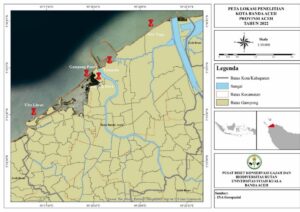
Figure 1 Research sites
Results
Hunting data collection was carried out in two locations, namely Gampong Lampulo and Gampong Alue Naga. Poaching investigations for animals are a very sensitive issue for some communities, so we only obtained permits for 2 of the 5 study locations we had designed. In two locations, namely Gampong Lampulo and Gampong Alue Naga, we were able to interview 60 people who were or are still poachers for migratory birds. We ask casual, relaxed questions with the goal of not wanting the correspondent to feel like he’s being interrogated. The mapping data of hunting activities for shorebird species in Banda Aceh can be seen in the table below.
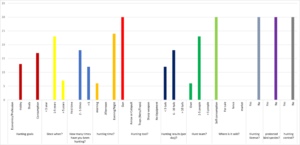
Figure 48. Data Analysis of Hunting Mapping in Gampong Lampulo, Kutaraja District, Banda Aceh City
Based on Figure 48, hunting activities carried out in Gampong Lampulo, Kutaraja District, Banda Aceh City are carried out with the aim of channelling hobbies and the results obtained will be consumed. This custom is carried out by some village youths at night. The consumption process is usually done by adding several ingredients such as instant noodles and several other traditional spices. This activity is still relatively new, because it has not been more than 5 years, so the chances of them stopping this hunting activity are very large. Hunting is done at night. Hunting at night using the air guns they have, in a day they can get as many as 10 fish for one cooking, usually done on Saturday nights. In addition, the game is only for personal consumption, there is no game for sale. This is because hunting with air rifles will kill the birds, so the chances of being bought by people are very small.
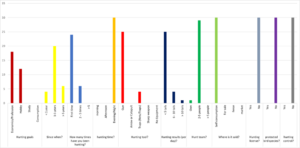
Figure 49. Data Analysis of Hunting Mapping in Gampong Alue Naga, Syiah Kuala District, Banda Aceh City
Meanwhile, based on Figure 49, hunting activities in Gampong Alue Naga, Syiah Kuala District, Banda Aceh City are not much different from Gampong Lampulo, except that in Alue Naga there is a community that works as shooters, so many migratory birds are targets for shooting. Hunted fish are also sold to several food stalls in Darussalam and the Ujoeng Bate tourist area. The size of the hunted bird can be easily recognized because it is relatively smaller than the size of a chicken. Dominant hunting was carried out at night, here the researchers never joined the hunters because it was done at night, limited equipment and materials so we just waited at the boat landing site. Researchers hope that there will be further research to map the hunting locations at night which are carried out in Gampong Alue Naga, because access to the hunting locations can only be done by boat. Some of the documentation below we are forced to cover our faces from hunters, in order to maintain a code of ethics because we also do not yet have full permission from these hunters regarding the documentation of their hunting activities.
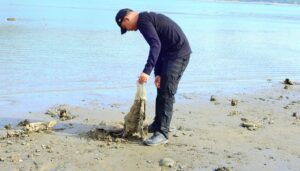
Figure 2. We secure the Nets used for Catching Birds that have been left by hunters
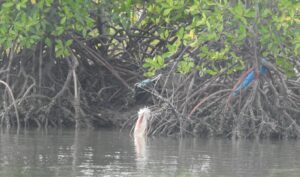
Figure 3. Because Hunters Catch Birds at Night, so that in the morning we only find remnants of netting ropes left by hunters.
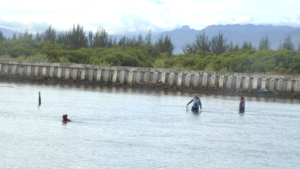
Figure 4. Several people in Gampong Lampulo helped us to collect nets in the water which had been stagnant by the high tide.
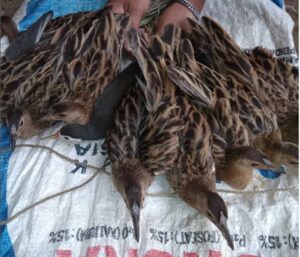
Figure 5. The bird caught is a white-breasted waterhen with a lot of juveniles. This bird will be sold to Pasar Lamdinding, Kuta Alam sub-district, Banda Aceh city
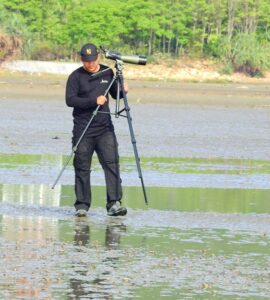
Figure 6. Migration Bird Inventory was conducted in Lambadeuk Village, Kuta Baro District, Aceh Besar. This location was chosen because it has a different habitat from other locations, because this location was previously a densely populated area, after the 2004 Aceh Tsunami, this location was filled with mangrove vegetation, but sometimes debris and building structures are still found.
Recommendations
- Habitats
The shoreline restoration program is very urgent to do. Although currently the reforestation program in the form of planting mangroves is very large, there are still other problems, namely not much of the planted mangroves grows. So that further coordination and assistance is needed regarding planting techniques and techniques for selecting the right seeds with the Gampong Lambadeuk Aceh Besar area. The success of this planting has become an important capital for several coastal locations in Banda Aceh and Aceh Besar considering they are migratory bird resting and feeding areas.
- Habitat Quality Improvement
Some of the locations we visited had the main problem in the form of waste, either from the community or trash sent from other areas, so it is necessary to encourage many communities and related agencies to deal with this waste problem in order to improve habitat quality.
- Potential Toxic in the Environment
The water bird habitats in Lambadeuk and Deah Syiah Kuala villages are the most dominant locations for waste disposal, such as water used for washing ponds, motor/car oil, water used for textiles. So we hope that there will be activities to measure the quality of water and soil to see the threshold for poison, because coastal areas are used not only by birds and other animals, but people also depend on them for their livelihoods.
- Increasing the Role of Women
During our research, we met that the hunters were children who were still at the high school level, so that the role of women as parents and business actors around coastal areas needed to be increased. One of the efforts, such as protecting the mangrove forest area besides being a place to find shellfish and fish, is also a location for water bird ecotourism, and women can take a role here, through this program it is hoped that it can improve the family’s economy, so that the dependence of families on hunting migratory birds is optimally reduced.
The project was funded through the 2022 EAAFP WG/TF Small Grant Fund. View the report, Click here.





